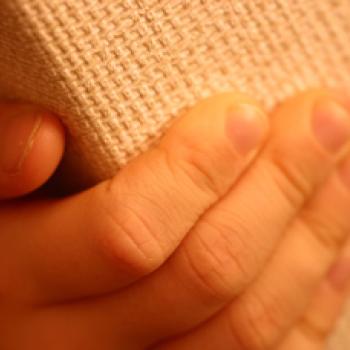Book Report Alternative: Creating a New Book Cover

- Preview |
- Standards |
- Resources & Preparation |
- Instructional Plan |
- Related Resources |
- Comments
Overview
The proverb says, “You can't judge a book by its cover.” In this lesson plan, students are not judging what is inside the book, but what is on the cover itself. What does it include? Why? What is left off? Why do you think that is? After examining many book covers and dust jackets, students recreate a cover or dust jacket for a selected book; then, they share their creations with their classmates and explain the changes they made or what they chose to keep. Students use a checklist to make sure they have all of the needed components, and the teacher can use the checklist as an assessment piece.
Featured Resources
Book Cover Guide: This online guide provides information about the components of a book cover.
Book Cover Creator: This online tool allows students to design and prints covers for books.
From Theory to Practice
In her English Journal article "Fifty Alternatives to the Book Report," Diana Mitchell explains "Students tire of responding to novels in the same ways. They want new ways to think about a piece of literature and new ways to dig into it" (92).
Mitchell's observation is supported by Jim Cope's survey of 272 high school seniors in five Georgia high schools. In the article reporting his findings, Cope states, "Book reports were listed as the third most negative school reading experience, and can be considered a subset of students' general disdain for assigned reading" (21). Like Mitchell, Cope suggests that teachers "move away from the traditional book report and consider more exciting activities" in order to raise students' interest and engagement in reading. The end result of book report alternatives, such as the one explored in this lesson plan, is that the activities "whet the interest of students in exploring new directions and in responding with greater depth to the books they read" (Mitchell 92).
Further Reading
Common Core Standards
This resource has been aligned to the Common Core State Standards for states in which they have been adopted. If a state does not appear in the drop-down, CCSS alignments are forthcoming.
State Standards
This lesson has been aligned to standards in the following states. If a state does not appear in the drop-down, standard alignments are not currently available for that state.
NCTE/IRA National Standards for the English Language Arts
- 3. Students apply a wide range of strategies to comprehend, interpret, evaluate, and appreciate texts. They draw on their prior experience, their interactions with other readers and writers, their knowledge of word meaning and of other texts, their word identification strategies, and their understanding of textual features (e.g., sound-letter correspondence, sentence structure, context, graphics).
- 4. Students adjust their use of spoken, written, and visual language (e.g., conventions, style, vocabulary) to communicate effectively with a variety of audiences and for different purposes.
- 5. Students employ a wide range of strategies as they write and use different writing process elements appropriately to communicate with different audiences for a variety of purposes.
- 6. Students apply knowledge of language structure, language conventions (e.g., spelling and punctuation), media techniques, figurative language, and genre to create, critique, and discuss print and nonprint texts.
- 8. Students use a variety of technological and information resources (e.g., libraries, databases, computer networks, video) to gather and synthesize information and to create and communicate knowledge.
- 11. Students participate as knowledgeable, reflective, creative, and critical members of a variety of literacy communities.
- 12. Students use spoken, written, and visual language to accomplish their own purposes (e.g., for learning, enjoyment, persuasion, and the exchange of information).
Materials and Technology
Selected texts for students to examine
Printouts
Websites
Preparation
- Gather books for the students to examine that have different and interesting book covers or dust jackets. You can also choose images of book covers online at Amazon.com, Barnes and Noble, or another online book seller.
- Make appropriate copies of the Examining Book Covers and Dust Jackets, Book Cover Components, and Dust Jacket Components.
- Make copies of the rubric so each student has a copy.
- Test the Book Cover Guide and Book Cover Creator on your computers to familiarize yourself with the tools and ensure that you have the Flash plug-in installed. You can download the plug-in from the technical support page.
Student Objectives
Students will
- examine the components of a book cover or dust jacket.
- design a new cover for a book or a dust jacket based on their comprehension of the story.
- share and explain their new book covers or dust jackets.
Session One
- Explain that the class will be looking at numerous book covers and dust jackets so they can see what information is found there.
- Discuss the difference between a book cover (the front of a book) and a dust jacket (paper covering found on a hardback book that is usually illustrated and includes front and back flaps, that protects the binding of the book from scratches).
- Show students the books that you have gathered for this activity. Hold them up, and let the students see the book covers and dust jackets.
- Have students share their initial reactions to the different book covers and dust jackets. You may also want to show the students examples of older book covers online: Publishers' Bindings Online: 1815–1930 and Dust Jackets from American and European Books, 1926–1947 from the New York Public Library Digital Gallery.
- Provide time for students (individually, in pairs, or groups) to examine the book covers and dust jackets.
- While they are examining the book cover and dust jackets, ask students to identify the information contained on most book covers. Depending on the level of the students, you may want to provide them with a handout that provides prompts as they look at the books.
- As students explore and examine the different book covers and dust jackets, observe their book-handling skills and the comments they are making about what they see.
- At the end of the session, allow time for the students to share some of what they observed.
Session Two
- Begin this session by asking students to share the attributes of book covers and dust jackets. Record this information on the board or on chart paper.
- To make sure that students see all of the different components, share the Book Cover Guide.
- Invite the students to share the book cover or dust jacket that was their favorite. Students should state reasons why that cover or jacket was their favorite. Record this information as well.
- Using the known attributes of book covers and dust jackets, and what makes the covers or dust jackets attractive or pleasing, invite students to recreate a book cover or dust jacket for a book that they have already read or listened to as a read aloud.
- Pass out and review the Book Cover Components checklist or the Dust Jacket Components checklist so that students know the information required on their book covers or dust jackets. Also pass out or display the rubric so they know how their project will be assessed.
- Demonstrate the Book Cover Creator to students in the computer lab or using an LCD projector. Show the students how the tool works and create an example using a text that all students have read or are familiar with.
- Answer any questions the students may have.
Session Three
- Allow this entire session for students to recreate the cover or dust jacket of a book that they have read or listened to as part of a read aloud using the Book Cover Creator.
- Monitor students as they work, and provide feedback and support as needed. This is also a good time to take anecdotal notes and/or interview the students about their knowledge of the books and the components of a book cover or dust jacket.
- Remind them to revisit the Book Cover Components checklist or Dust Jacket Components checklist so they include all of the required parts.
- Continue working until all students have completed their projects and have printed them out.
Session Four
- When all of the students have completed their projects, allow time for the students to share their new book covers or dust jackets. Prompt students to explain what they changed from the original cover and why.
- If possible, have the students share the original book cover or dust jacket when they share their recreations.
- As students are sharing, assess their work using the rubric.
Extensions
- Ask students to consider how the potential readers of a book might influence the choices for the book cover. A book from the Harry Potter series can provide a useful example. Have students discuss how the cover might be designed differently based on whether the readers are their own age, teenagers, or adults.
- Share books that have more than one cover. Books that have been dramatized as movies often have a second version of the book cover that features a character or scene from the movie. Books such as The Lion, the Witch and the Wardrobe, Charlie and the Chocolate Factory, and Because of Winn-Dixie would work for this discussion. Ask the class to discuss the differences between the two versions. If desired, use the Venn Diagram to organize the information on the two covers. Ask students to review the differences and discuss the reasons that the new version was created—who will the new version appeal to? why was a new version necessary? if you had your choice, which version do you prefer?
Student Assessment / Reflections
- Focus on observation and anecdotal note taking as students work on their projects to provide ongoing assessment of their progress.
- Use the rubric to assess students’ book covers or dust jackets.
- Compare the students’ checklists to their final projects to make sure that all of the needed components are present.

One problem I had though was that the interactive program was too constrained and took a long time to process to the printer when the students were ready to print. My students became frustrated with the program because they couldn't get the formatting to go exactly as they desired.
I ended up having to modify the lesson and print a master Dust jacket and then have the students create their new jacket by hand. Quite honestly, the ones the students did by hand were much more creative than the ones completed online.
One problem I had though was that the interactive program was too constrained and took a long time to process to the printer when the students were ready to print. My students became frustrated with the program because they couldn't get the formatting to go exactly as they desired.
I ended up having to modify the lesson and print a master Dust jacket and then have the students create their new jacket by hand. Quite honestly, the ones the students did by hand were much more creative than the ones completed online.
One problem I had though was that the interactive program was too constrained and took a long time to process to the printer when the students were ready to print. My students became frustrated with the program because they couldn't get the formatting to go exactly as they desired.
I ended up having to modify the lesson and print a master Dust jacket and then have the students create their new jacket by hand. Quite honestly, the ones the students did by hand were much more creative than the ones completed online.
Add new comment